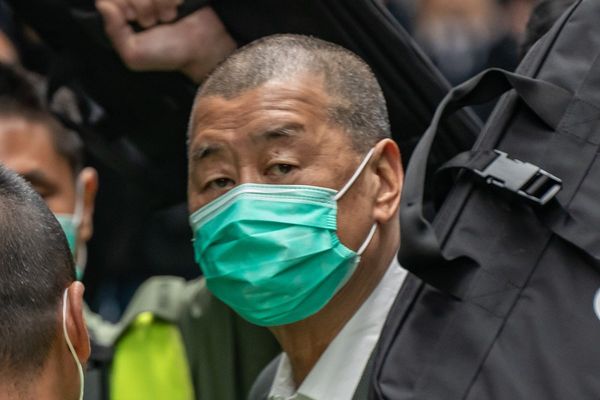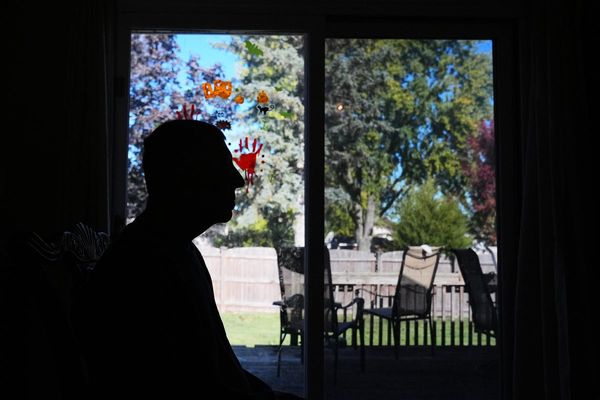
Supporters of the environmental activist group Extinction Rebellion have taken part in a mass sit-down protest in the heart of London’s shopping district.
Several thousand demonstrators with multicoloured flags bearing the group’s “extinction” symbol gathered near Marble Arch on Saturday morning as samba bands warmed up.
They then moved to Regent Street and Oxford Circus, where they sat down in the road, disrupting traffic through central London, and called for an end to investment in fossil fuels.
“A number of protesters in Oxford St & Regent St are sitting in the road, blocking traffic in both directions,” the Metropolitan police tweeted. “Traffic diversions are being put in place.”

The Metropolitan police said most of the demonstrators subsequently moved to Trafalgar Square, resulting in traffic diversions.
The protesters sat down in the road on the edge of Whitehall and stopped traffic while a band of drummers played near the base of Nelson’s Column.
Extinction Rebellion, also known as XR, promised before Saturday’s protest that it would “grind the capital to a halt” over the coming week, with new tactics developed in response to increasingly harsh policing that limited the group’s attempts to cause disruption in protests last August.
In Hyde Park, police vans and officers on horses patrolled the periphery of the crowd, but the policing presence appeared low-key. The crowd moved off at about midday for the march through central London, staging roadblocks on the way.
Direct actions were planned on the fringes of the march against specific targets, but XR kept quiet on the details of what those targets were.
During the morning, protesters mainly milled about, joining with affinity groups, greeting friends who they had not seen since previous actions, and enjoying a burst of spring sunshine.
Nicky Goulianis, 33, from London, stood in the middle of the crowd with her nine-month-old daughter, Clio, in a buggy. Asked why she had joined the protest, she answered: “All the reasons.”
“I’ve been living away from the UK but I have been admiring the movement from afar, and I think it’s inspiring, the turnout here. I have been living in New York and I saw echoes of it in New York and I’m really excited to join today,” Goulianis said.
“I think we need radical action. I think often the oil and gas lobby does a good job of making us think it’s about individual consumption, but we need to change everything.”
On the edges of the crowd, with a small group, stood Marcelo Cervone, 28, who had adorned the peak of his baseball cap with XR stickers. He said: “I want to safeguard my son’s future … he’s four months old and I want to make sure he can dream but, as we were allowed to, dream big.”
Cervone said he had been protesting with XR for several years. “We are all hoping we can end the fossil fuel economy. That’s the number one goal: immediate transition out of the fossil fuel economy,” he said.

Dr Graeme Hayes, an academic at Aston University who studies social movements, was also among those who gathered in Hyde Park. He has observed, researched and analysed XR since its inception in 2018.
“This is not a different thing. This feels like the same thing it looked like three years ago but probably with fewer people, and obviously its corralled out into a less enclosed space,” Hayes said.
“The move from Parliament Square to Hyde Park is also that move from three years of interaction with policing and not being able to hold that public space.”
Hayes said he felt ideological barriers were preventing XR from evolving.
“I’ve taken lots of photos of all the different signs; so many are focused on children or your children’s children,” he said.
“There is always a sense of how justice is a relationship to the future. There is a displacement of justice. As usual there’s loads about justice and it’s about Africa, and of course that is really important, but it’s not about here and it’s not about now. I’m trying to look for things about capitalism, for example, and it’s hard to find.”







